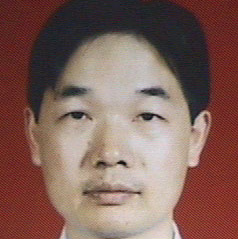Colloidal Semiconductor Nanostructures and Optoelectronic Devices
A special issue of Photonics (ISSN 2304-6732). This special issue belongs to the section "Optoelectronics and Optical Materials".
Deadline for manuscript submissions: closed (15 June 2022) | Viewed by 2449
Special Issue Editors
Interests: optoelectronic materials and devices; optical spectroscopy; photonics, light-matter interaction
Interests: colloidal quantum dots and perovskites color converters for LEDs and lasers; colloidal semiconductor lasers; DNA photonics for sensing; hybrid, mechanically-flexible sources for phototherapy
Interests: optoelectronic devices; electron-phonon coupling; organic-inorganic hybrid materials; electronic-photonic integrated circuits; impurities and defects; optical spectroscopy
Special Issue Information
Dear Colleagues,
In recent years, colloidal semiconductor nanostructures have been attracting increasing attention in the application of optoelectronic devices, though they first appeared three or four decades ago. While preserving the unique optical properties of semiconductors in reduced dimension, colloidal semiconductor materials allow for device fabrication by solution-based technology, such as spin-coating and inkjet printing. As such, very cost-effective production and wearable devices on flexible substrates are possible. It can be envisaged that the combination of the flexibility of soft-matter-based photonic devices and the freedom in the spatial formation geometry offered by additive production technology may enable the on-demand fabrication of photonic integrated circuits.
The research of colloidal semiconductors started with nanocrystals (quantum dots) of II–VI group metal chalcogenides. The materials systems have been extended to III–V compound semiconductors and, more recently, metal halide perovskites. Besides zero-dimensional quantum dots, exploited colloidal nanostructures also include 1D nanowires and 2D nanoplatelets, harnessing different electronic structures and anisotropic optical properties. Leveraging on the improved understanding of growth kinetics, a wealth of core/shell nanostructures have been developed to boost material performance. So far, colloidal semiconductors have been extensively applied in optoelectronic devices such as lasers, LEDS, photovoltaic devices, and photodetectors or sensors.
This Special Issue aims to highlight the most recent advances in the fabrication and characterization of colloidal semiconductor materials and corresponding devices. We welcome both review and original articles. Topics will include but are not limited to, novel growth methodology, exploration of linear and nonlinear optical properties, excitonic dynamics, optical anisotropy, etc., as well as the development of optoelectronic devices.
Prof. Dr. Handong Sun
Dr. Nicolas Laurand
Prof. Dr. Yong Zhang
Guest Editors
Manuscript Submission Information
Manuscripts should be submitted online at www.mdpi.com by registering and logging in to this website. Once you are registered, click here to go to the submission form. Manuscripts can be submitted until the deadline. All submissions that pass pre-check are peer-reviewed. Accepted papers will be published continuously in the journal (as soon as accepted) and will be listed together on the special issue website. Research articles, review articles as well as short communications are invited. For planned papers, a title and short abstract (about 100 words) can be sent to the Editorial Office for announcement on this website.
Submitted manuscripts should not have been published previously, nor be under consideration for publication elsewhere (except conference proceedings papers). All manuscripts are thoroughly refereed through a single-blind peer-review process. A guide for authors and other relevant information for submission of manuscripts is available on the Instructions for Authors page. Photonics is an international peer-reviewed open access monthly journal published by MDPI.
Please visit the Instructions for Authors page before submitting a manuscript. The Article Processing Charge (APC) for publication in this open access journal is 2400 CHF (Swiss Francs). Submitted papers should be well formatted and use good English. Authors may use MDPI's English editing service prior to publication or during author revisions.







